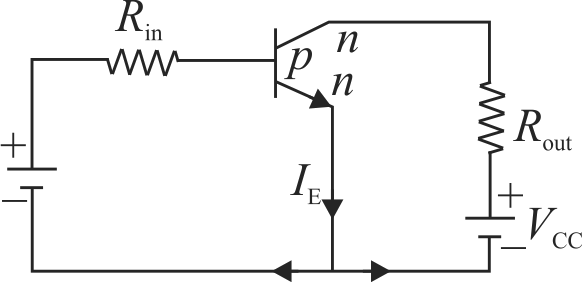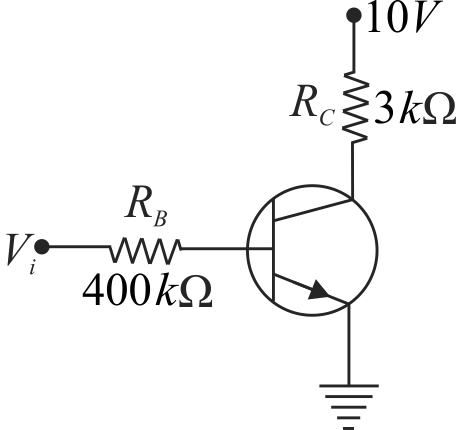365470
The given transistor operates in saturation region, then what should be the value of \(V_{B B}\) ?
\(({R_{out}} = 200{\mkern 1mu} {\mkern 1mu} \Omega ,{R_{in}} = 100{\mkern 1mu} {\mkern 1mu} k{\mkern 1mu} \Omega ,{V_{CC}} = 3\;V,\)
\({V_{BE}} = 0.7{\mkern 1mu} {\mkern 1mu} V,{V_{CE}} = 0{\mkern 1mu} {\mkern 1mu} V{\mkern 1mu} and{\mkern 1mu} {\mkern 1mu} \beta = 200)\)
365470
The given transistor operates in saturation region, then what should be the value of \(V_{B B}\) ?
\(({R_{out}} = 200{\mkern 1mu} {\mkern 1mu} \Omega ,{R_{in}} = 100{\mkern 1mu} {\mkern 1mu} k{\mkern 1mu} \Omega ,{V_{CC}} = 3\;V,\)
\({V_{BE}} = 0.7{\mkern 1mu} {\mkern 1mu} V,{V_{CE}} = 0{\mkern 1mu} {\mkern 1mu} V{\mkern 1mu} and{\mkern 1mu} {\mkern 1mu} \beta = 200)\)
365470
The given transistor operates in saturation region, then what should be the value of \(V_{B B}\) ?
\(({R_{out}} = 200{\mkern 1mu} {\mkern 1mu} \Omega ,{R_{in}} = 100{\mkern 1mu} {\mkern 1mu} k{\mkern 1mu} \Omega ,{V_{CC}} = 3\;V,\)
\({V_{BE}} = 0.7{\mkern 1mu} {\mkern 1mu} V,{V_{CE}} = 0{\mkern 1mu} {\mkern 1mu} V{\mkern 1mu} and{\mkern 1mu} {\mkern 1mu} \beta = 200)\)
365470
The given transistor operates in saturation region, then what should be the value of \(V_{B B}\) ?
\(({R_{out}} = 200{\mkern 1mu} {\mkern 1mu} \Omega ,{R_{in}} = 100{\mkern 1mu} {\mkern 1mu} k{\mkern 1mu} \Omega ,{V_{CC}} = 3\;V,\)
\({V_{BE}} = 0.7{\mkern 1mu} {\mkern 1mu} V,{V_{CE}} = 0{\mkern 1mu} {\mkern 1mu} V{\mkern 1mu} and{\mkern 1mu} {\mkern 1mu} \beta = 200)\)
